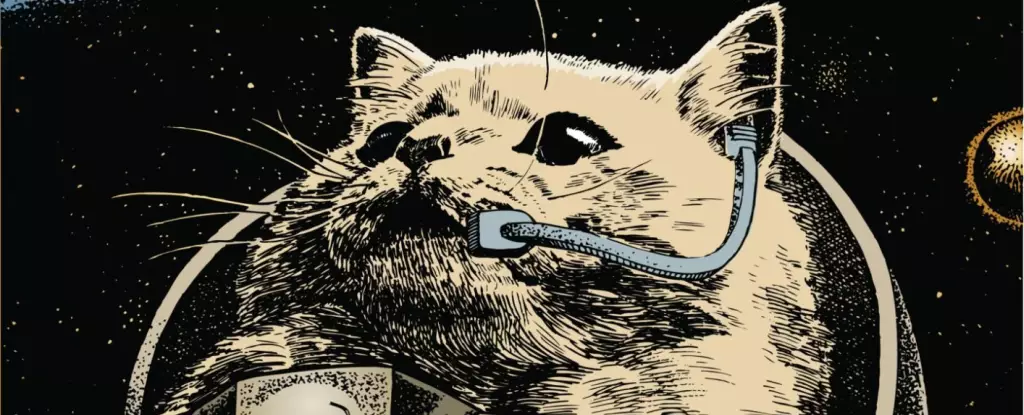Cats are perhaps the epitome of physical grace in the animal kingdom, exhibiting a remarkable agility that piques human curiosity. Among their impressive repertoire of skills, the most notable might be their uncanny ability to land deftly on their feet after a fall. This phenomenon is more than just folklore; it serves as a fascinating subject for scientific inquiry. Through various experimental methods, researchers have worked to unravel this seemingly magical trait, illustrating not just the extraordinary anatomical features of felines, but also offering insights with implications for human physiology in extreme conditions.
At the heart of a cat’s impressive landing capability lies its unique skeletal structure and reflexive abilities. A domestic cat’s body is composed of roughly 230 to 250 bones, which are flexible and adaptable. This elasticity allows for remarkable agility and balance. When a cat falls, it engages in a process known as the “righting reflex,” which allows it to twist its body in mid-air, aligning its feet downward for a safe landing. The innate coordination and muscle control exhibited in this maneuver are awe-inspiring, as they defy the physics of gravity in a graceful ballet of survival instinct.
Scientific exploration into this phenomenon intensified in the late 19th century with the advent of chronophotography. This groundbreaking technique, exemplified by the work of French scientist Étienne-Jules Marey in 1894, enabled researchers to capture high-speed sequences of motion, thus revealing how cats manipulate their bodies during a fall. The images, taken at 12 frames per second, served to demystify the agile sequences involved in a cat’s descent, offering insights into both biology and physics.
Fast forward to the mid-20th century, researchers began experimenting with parabolic flight to assess how zero-gravity environments impact a cat’s ability to navigate space. The U.S. Air Force Aerospace Medical Research Lab initiated experiments involving domestic cats aboard aircraft specifically designed to create temporary weightlessness. The conditions faced by passengers on the “vomit comet” offered a unique opportunity to study the effects of disorientation on a feline’s instinctive reflexes.
The findings from these experiments were illuminating. Though the cats exhibited signs of confusion in weightless conditions, they still demonstrated a remarkable ability to twist and reorient themselves. This response prompted further investigation into how sensory organs, particularly the otoliths in the inner ear, contribute to balance and spatial orientation in both cats and humans.
The research conducted on cats has had broader implications for understanding human physiology during space travel. Insights derived from these studies were instrumental in developing training protocols for astronauts. By mimicking a cat’s righting reflex, astronauts can learn to orient themselves effectively in microgravity, ensuring they can navigate their environment with greater control and ease.
Moreover, the pioneering spirit of scientists like Siegfried Gerathewohl and Herbert Stallings paved the way for future research on both animal and human biomechanics. The knowledge gained through these studies has not only advanced our understanding of physical agility but has also inspired innovations in various fields, including aerospace engineering and athletic training.
Cats remain an enigma, sparking both scientific curiosity and cultural fascination. Their ability to tantalizingly elude gravity’s grasp continues to intrigue pet owners and scientists alike. If humans ever contemplate sending life forms into the cosmos, the agility and adaptability of cats may teach us invaluable lessons about surviving in unknown environments. While we might never fully decode the mystical nature of these agile creatures, their incredible abilities inspire ongoing research and evoke awe among all who observe them.
The simple domestic cat, with its ability to defy gravity and elegantly recover from falls, serves not only as a beloved household companion but also as a subject worthy of rigorous scientific exploration. This intersection of nature and science underscores the profound lessons we can gain from our furry counterparts and the mysteries that still await discovery in the animal kingdom.



Leave a Reply